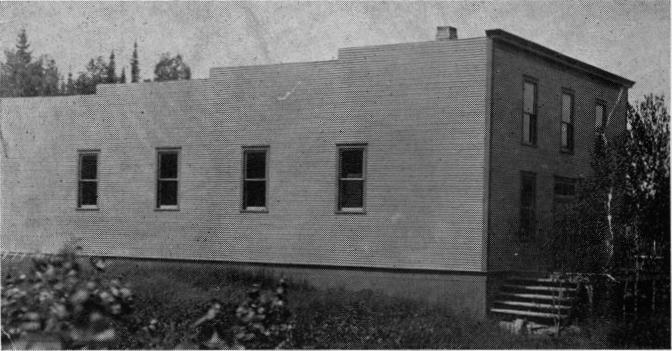and homes, many of them homesteads cleared and made productive by the Finns, many of them now in the hands of other Finns. Among the pioneer names appear those of Emil and Senja Hallila, Siik, Peterson, and on the Sax road, Ollila, and beyond the crossroads Nestor Salinen, Alfred Olson. Along these roads, also, are the church, the cooperative club hall, the cemetery.
According to Ilmonen, the first Finns arrived in Zim in 1894, and he states that in 1926, according to his count, there were still 40 of them there. Hilma Kanerva suggests that this figure might be a slip of the pen and should read `40 families.' This would seem more reasonable, because at one time there was so much organized Finnish activity here that it can hardly have been possible among only 40 individuals.

"Finn Hall" in Zim.
As far as religious activity is concerned, Kanerva states that there was never a Finnish parish here. However, Zim did belong to the Kelsey-Little Swan-Sax region of the Congregational church under Pastor Saarikoski. Services were held at Isaac Holso's farm, and the pastor in the 1930s was Johannes Väänänen.
There was, however, a Finnish hall in Zim, built by the `Finnish National People Society' started in 1908, which was originally a group of members of the local temperance society Laakson Ruusu (Rose of the Dale.) The hall was used first by the temperance society, but it soon also housed the workers' society (1910-1920) as well as the society started in 1928 to support the Industrialisti, and then the cooperative club. It was owned subsequently by the Farmers Club and finally by the Cooperative Club. The first board
572